Featured

How young women in Delhi are fighting street harassment
When Pooja*, a teenager in New Delhi, was 15, she would walk a roundabout route home from school. That way she could avoid harassment from boys lurking in a shadowy lane nearby.
"That corner over there, I wouldn't take that right," she said, pointing at a street near her home in a working-class neighbourhood where residents live cheek by jowl in brick buildings amid webs of electric wires.
Her parents' protective mindset added to Pooja's frustration: they wouldn't let her go out to play sports or meet friends.
Three years later, Pooja, who aspires to be an actress and speaks with dramatic flourishes, recounted how she helped stop harassment near her house by joining other teenagers to tell their neighbours about the problem.
The community chipped in for a streetlamp that deters sketchy passers-by. Meanwhile, Pooja has been travelling around New Delhi to play touch rugby with a co-ed team she helps to coach.
Her new-found freedom began with a programme called "Safer Cities" that helps girls improve their own safety.
Established by Plan India - a child rights organisation - in 2014, and run in partnership with local non-governmental organisations, the programme has almost 10,000 active members, including 8,300 girls and 1,400 boys, in 40 community-based clubs in India's capital New Delhi.
It's been so effective in Pooja's community in Mangolpuri, an area in northwest Delhi where 3,000 youth participate in activities coordinated with the help of the Dr AV Baliga Memorial Trust, that she and other girls believe street harassment near their homes has been reduced by more than half.
That's a notable change in India's capital, which grew notorious for being one of the worst cities in the world for violence against women after the brutal gang rape of a 23-year-old woman in the back of a bus in December 2012.
Safety continues to be a major concern for women and girls in New Delhi, where more than 95 percent report feeling unsafe in public spaces.
Street harassment is so bad in parts of the city, including Mangolpuri, where men follow girls down narrow streets, that some parents prefer to pull their daughters out of school than have them walk there.
Over the last five years, many women's advocacy groups have responded with community-based programmes like 'Safer Cities' that aims to reduce violence against women and girls with activities focused on shifting social norms.
"Things like violence against women or sexual harassment are often thought of as a woman or a girl's problem only, (but) battling it requires a larger community effort," explained Shruti Kapoor, founder of Sayfty, an organisation focused on changing perceptions of violence against women in India.
Putting safety on the map
As part of "Safer Cities", separate workshops are arranged for teenage boys and girls to sensitise them on gender norms, including stereotypes that girls belong at home.
Volunteers then conduct safety audits of their community together by making maps that document problems like poor lighting, cracked pavements and areas where men congregate to harass girls.
Next, they speak to their parents, neighbours and the authorities about fixing them. In Mangolpuri, they convinced shopkeepers to install lights and CCTV cameras in unsafe areas. They also spurred city officials to fix broken street lamps and clean dirty public toilets.
"Viewing it on a map, visualising it, makes you look at the problem very differently," said Elsa Marie D'Silva, founder of SafeCity, an online platform that crowdsources stories of sexual harassment and abuse from Indian cities, including Delhi, and places them on a map.
Compiling information from a handful of women or girls harassed in the same place can be enough to push police and others to respond, she explained. "When we go with our individual stories, it's easier for people to point fingers at us, putting the onus back on us for being in the wrong place at the wrong time, wearing the wrong clothes, et cetera."
On a walk around their neighbourhood, Pooja and her friends Swati*, 17, and Roopa*, 16, point out changes sparked by the programme, including buildings that community members have declared as 'safe houses' where girls can seek shelter from harassment. They also point out concerns they plan to discuss with city officials in monthly meetings.
Swati regularly attends appointments with police officers where she raises safety concerns alongside as many as 25 other children.
She's played a role in convincing police to throw drunkards out of a local park so children could use it, as well as to patrol her school between morning and afternoon shifts when boys would take advantage of crowds to grope girls.
The process has transformed Swati, who has a slender frame and aspires to go into banking. Three years ago, when she first got involved, she worried about whether the police would listen.
"We were so scared and we used to sit in the last row," she recalls with a smile. "… Now, I'm one of the most talkative ones."
Breaking the gender divide
In Mangolpuri, teenage girls and boys attend school in different shifts and are discouraged from socialising with one another. Getting to know one another and discussing gender issues have changed their perspective, according to some of the boys and girls involved in the programme.
"Now, we tell our friends that we shouldn't (harass) girls and that it isn't right," one boy in his late teens explained. "If someone teased you like that, how would you feel?"
Critically, telling men and boys about the effect of harassment can help reduce it, said Sohini Bhattacharya, president of the Breakthrough Foundation, which carried out research on perceptions of sexual harassment in a neighbourhood in New Delhi.
"Unemployed young men who don't have anything else to do think of (harassment) as an effective time-pass" and "don't really think it's harmful enough to make parents take girls out of school," she said.
In some cases, girls have also learned to cut harassment short with spunk. Boys frequently stand outside Roopa's school, where they comment on girls' clothing and body parts, she said.
She used to silently endure it, but, since discussing it with older girls at 'Safer Cities', Roopa, who is petite and hopes to be a teacher, pipes up. "I reply straight back to them and they get on their way," she grinned.
Barriers to widespread change
Even as community projects create pockets of change like that in Mangolpuri, patriarchal norms mean progress is slow.
"There is no quick fix," said Priya Varadarajan, founder of Durga India, an organisation focused on helping college students respond to sexual violence and harassment.
Pooja, Swati and Roopa are keenly aware of the challenges ahead. They find people look at and speak to women and girls with less respect as soon as they leave their immediate neighbourhood.
There are also issues closer to home. Some neighbours gossip about how the girls interact with boys and leave their house for extracurricular activities. They also question the kids' motives when they conduct safety audits.
But positive shifts in their families' attitudes keep them optimistic. Pooja says when her mother learned about the programme, she attended parents' meetings and volunteered to help.
"Before my mom didn't support my playing sports. Now she does and tells me to go for everything."
*The names of all children in this story have been changed due to security concerns
Source: Al Jazeera

In Their Absence: Families of the Disappeared Share Treasured Keepsakes
Photos and content courtesy Maatram.org
As of today, the families of the disappeared have been protesting, across the North and East. In some areas, it has been over 290 days. Their pleas, to provide details about what happened to their families, have yet to be answered. Five of the protesters have died since the protests began. In light of Human Rights Day, which falls on December 10, Groundviews translated this series, to highlight their continuing struggle
All names have been withheld to maintain the privacy of the individuals interviewed.
Maatram:
“Do you have anything that reminds you of your son/daughter/husband/grandchildren? Something that they used?”
Mother/Father/Wife/Sister/Grandmother:
“I have, son. I kept it safely. I washed my son’s blood-stained shirt, and kept it with me.”
“Yes, brother. I have one brother’s camera, and the other’s comb. I have my husband’s shirt as well.”
“We only had our clothes when we crossed over to the Army side, right? We didn’t have anything else. We thought our son would return, and that’s why we handed him over to the Army.”
“I have the blazer that we made for him to wear for his elder brother’s wedding. Since that’s all I had left in my suitcase, that’s the only thing I have to remember him.”
“I have the bedsheet my husband used. When she thinks of him, my daughter covers herself with this sheet.”
“This is a shirt my son sewed himself. He used to make clothes for me as well.”
The relatives of those who have been forcibly disappeared live on. They live surrounded by treasured possessions, each a reminder of their loved one’s absence. They pass by the places they once walked, and meet people their missing ones loved.
Recently Maatram visited these families to ask them a difficult question – if they would share their loved one’s possessions to be photographed. Upon asking this question, they wept bitterly. Their pain cannot be described with words.
Still, they came forward with these treasured belongings, wet with tears. They believe their loved ones will return. It was with great relief that their loved ones had survived, through bullets and shellfire that they handed them over to the Army. Now, since they haven’t returned, they are suffering.
Their sadness is immeasurable.
This is their story.
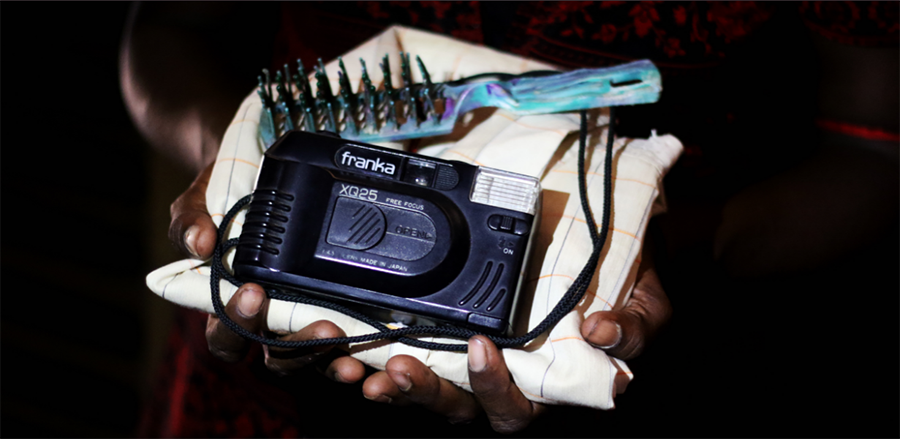
“During the last stages of the war, we handed our family over to the Army ourselves – my two younger brothers, aged 27 and 29 years, and my 30-year-old husband. Believing that they would question them and then release them shortly, we got into the bus and went to the IDP camp. At that time, I was 7 months pregnant with my second child (a daughter). My father said, “We can’t wait here without food or drink, let’s go back. They’ll return soon.”
They still haven’t come back. We have had to submit their documents to so many Commissions of Inquiry, and each time it costs us Rs. 300 or Rs. 400. They ask us who we handed our family over to, if we remember any names, and if we can remember any medals or symbols they were wearing. At that time we didn’t even have clothes to change into. We were going through such hardship, so how can we be expected to remember all these details?
Instead of making us search all this time, they should tell us whether our loved ones are alive or not. My children are always asking for their father. My daughter is now 8, and she still hasn’t seen her father. My son is 11. Whenever there is an event at school, he always sings about his father. They ask me if I have his phone number. If I die without finding my husband, I can manage. But at least if they can find one of my brothers, my mother and father can die at peace.
People who remember those who were lost in Mullivaikkal will remember in a month, 6 months, or a year. For us, we remember our family every day with sadness, and we will do so until we die. I still wear my pottu and wedding thali, thinking that I will see my husband again. My mother and father give me courage to keep going. If not for them I don’t know what I would do.”
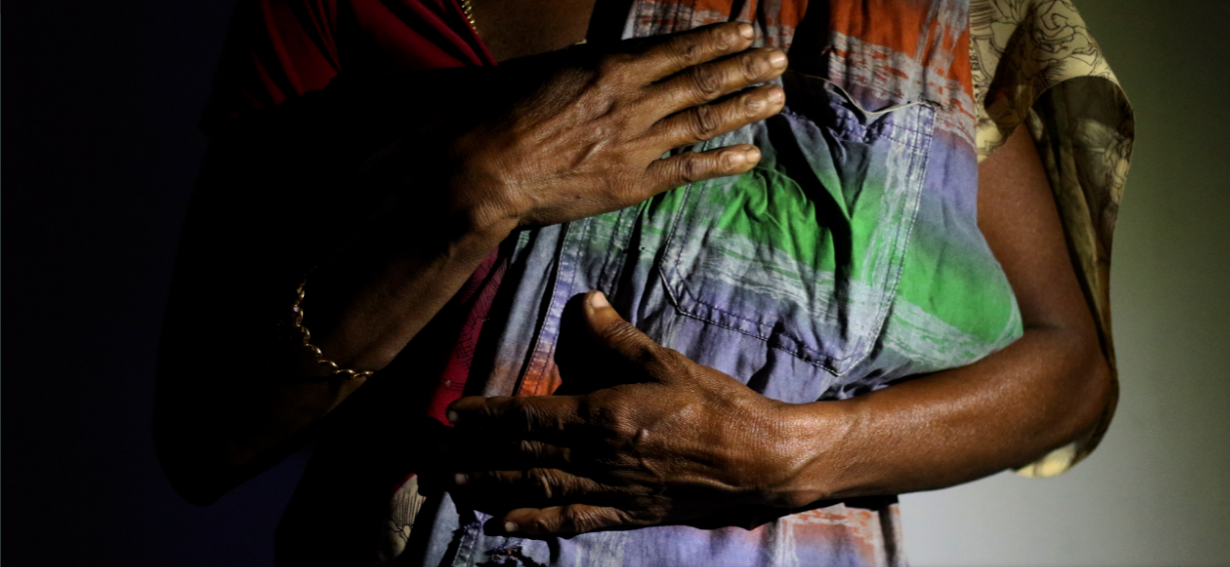
“My son’s name is Nalinikanth. At home, we call him Vijay. He is well-known in our village by that name. In 2007, the LTTE forcibly recruited him. He was just 19 years old. I never saw him again, but someone met him after I last saw him. He told them that he would be surrendering to the Army, and asked them to let me know. I never saw him again. Some people from the fourth floor (Editor’s Note: referring to the infamous fourth floor of the CID) came and said they had details about someone in their custody. The area was right, the Grama Sevaka Division was correct, even my name and my husband’s was correct, but the name of the person concerned was Vinothkanth, not Nalinikanth. They said they would clear up the confusion and let us know, but they never came back. We will only find peace when we know if our children are alive or dead. Since we don’t know, our minds are in tumult.”
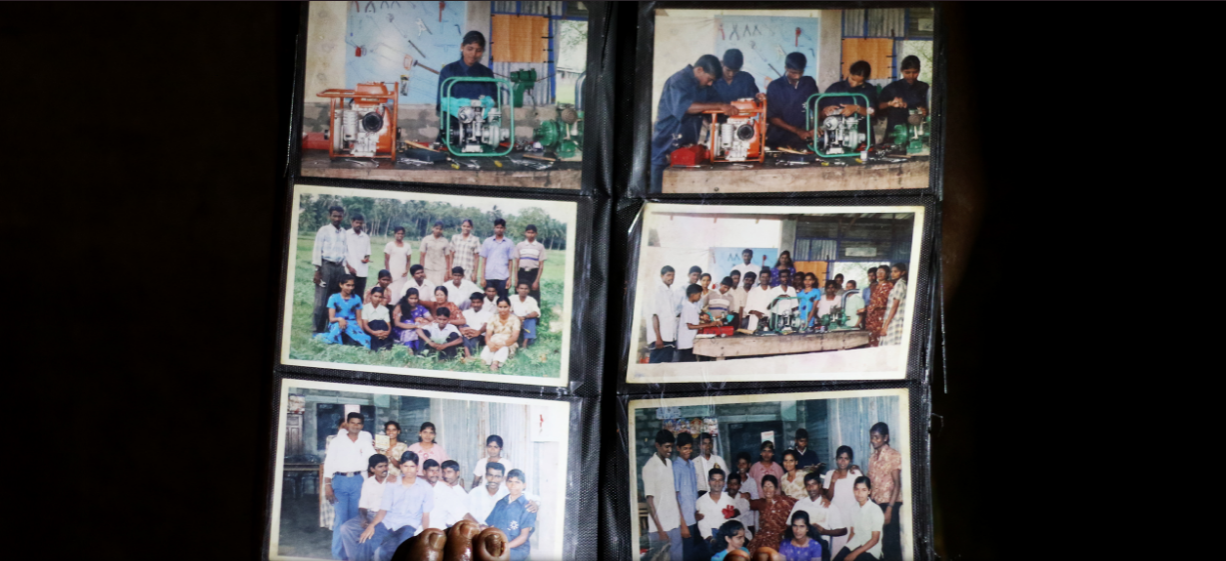
“My daughter was forcibly recruited by the LTTE, after finishing technical college. In 2008, she came for a relative’s funeral. We saw her for the last time around the end of 2008. When I went to the IDP camp, I heard she was at the Mannar hospital. I went and looked for her. She wasn’t there, but her name was registered by some police stationed at the hospital. Someone had come and taken her. A number of people from Ottuchutan were at the hospital. I showed them my daughter’s picture and asked if they had seen her. They said they recognised her, and said that her hand was injured. I heard from others that she had been shifted to the Pambaimadu detention camp. When I went there, I met a girl with the same name as my daughter, but it wasn’t her. This girl was from Trincomalee. I am still searching for my daughter.”
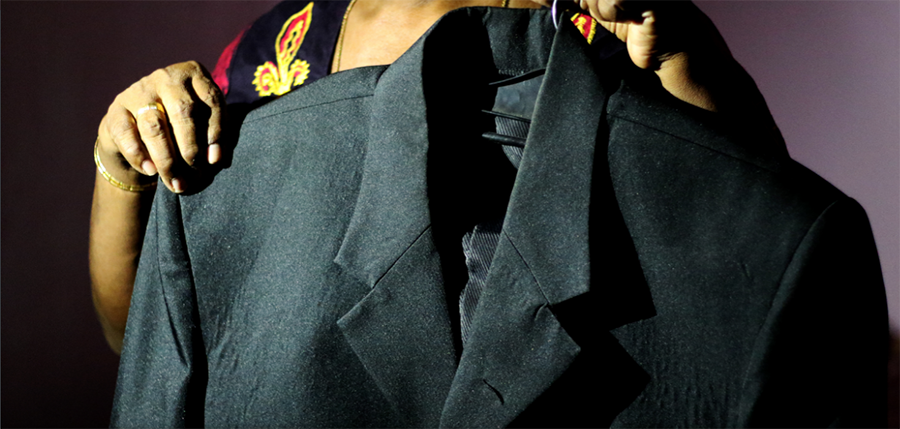
“My son’s name is Johnson Idaydaas, from Thazhayadi, Jaffna. My husband, son and I were one of the unfortunate few trapped in the middle during the last stages of the war. We escaped by boat. It was only when we alighted that we realised that our son wasn’t with us. First, we put a notice in Virakesari newspaper. We didn’t receive a reply. In 2011, we put a notice in the Uthayan newspaper, with my contact number. One night, at around 11 pm, he called me. First, I heard a voice speaking in Sinhala, then the line was cut. I redialled the number, and said, “Sir, sir” to the person on the other end. He replied, “Five minutes only, five minutes only,” and gave the phone to my son. I asked him where he was. He said, “Don’t search for me. I don’t know if they would allow you to see me even if you did search for me. In any case it will be difficult due to your age. I am alive.” He said he didn’t know where he was, but said he was with 53 others. “There is a shortage of food and clothes. If you can get in touch again, please bring some clothes,” he told me. I asked him, “Why do you sound different?” He said “They are giving me injections.” I wanted to check if it was him, so I asked if he could remember his younger sister. “Why, we lost her in the tsunami, why are you reminding me now,” he said and began crying. I started to cry as well, and the line was cut. From that day to this, I have not been able to contact him. I am surviving with the thought that he is still alive.
This government has to do something. Not just for my son, they should tell everyone whose family is missing whether they are alive or dead. I just want to know whether he is alive or dead, that is my only wish.
Recently my elder son wore Johnson’s blazer to go for a family wedding. Before that, when he was going to Colombo, I asked him to wear one of his younger brother’s shirts. I told him it would bring him good luck. We made this blazer for his elder brother’s wedding, in 2007. When we were displaced, this blazer and four sarees were all I had in a bag. This is all I have of his possessions.”

“On April 28, 2009, we were in a bunker. The Army came and took us away. One of our sons passed away, and it was our other son who made all the funeral arrangements. After the funeral, he put his brother’s wife and children into the last ship, but he stayed behind. At that time, he was 23 years old. I still don’t know where he is. On April 12, 2009, he came and left his sarong and shirt at home. To this day, I keep them to remember him. When I look at his clothes, I feel that he is alive. No one can tell me he is not alive. I know that he is.”
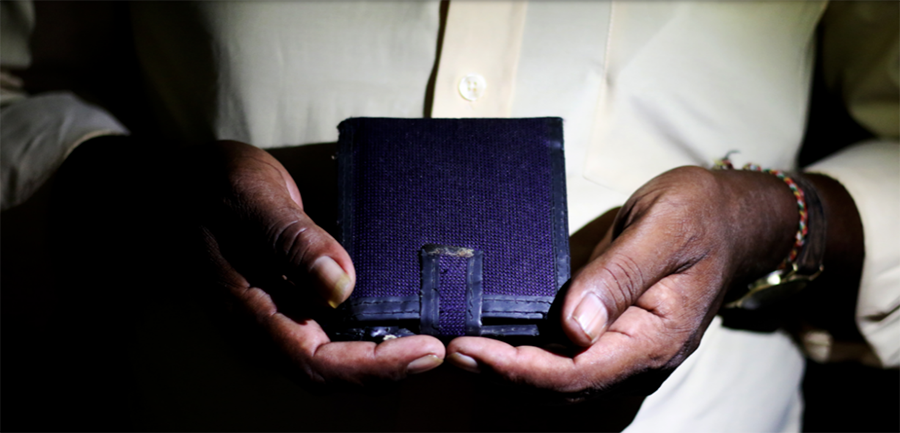
“My son disappeared during the last stage of the war in 2009. So far, we have not heard any information about his whereabouts. He was just 17 years old, and was sitting for his Advanced Level examinations. We have lodged complaints everywhere – with the ICRC, numerous Commissions, the police and CID. I want to know if he is alive or dead. We have all his possessions, his clothes in a box. When we look at them, we remember him.
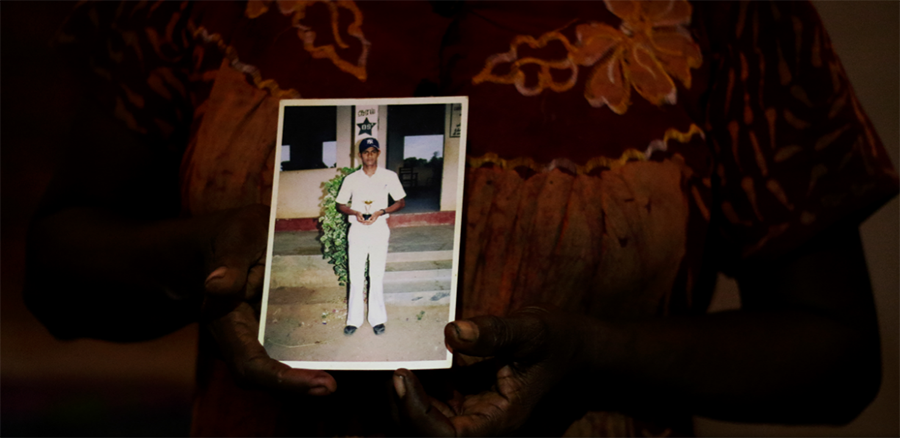
“During the last stage of the war, I was injured when we were crossing to the Army side. They took the injured people separately, so I got separated from my son. I begged them to let me travel to the hospital with my son. Since that day, I don’t know where he is. Someone said he was in the detention camps. I went to 8 camps and looked for him, but he wasn’t at any of them. He was sitting for his Advanced Level examinations at that time. My son isn’t a member of the LTTE, so he has to be alive, I believe that. Only God knows whether the Government would give any information.”

“My son sat for his Advanced Level examinations in 2006. In 2008, he was forcibly recruited by the LTTE. That same year, in Manalaru, the LTTE sent him to dig for an underground bunker. That area was shelled and he lost a leg. After that, the LTTE released him, and he was with us. Our son went missing during the battle of Mullivaikkal. On that day, he went with a friend to the beach. He never came home after that.
Two of my granddaughters were in the Sencholai children’s home which is in Puthukudiyiruppu. When the Army surrounded the area, they were displaced. One of them went missing in the chaos. We have yet to find her as well.”
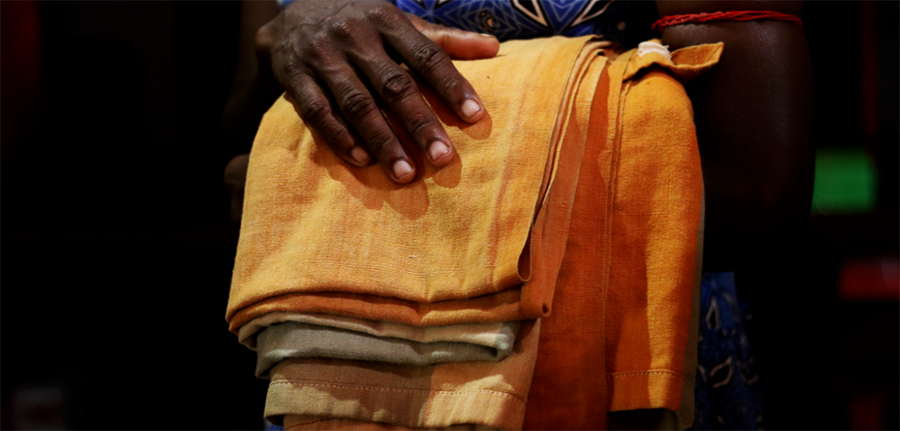
“My husband was a member of the LTTE. I handed him over to the Army. My husband said, “If I go, I won’t return.” I told him, “If everyone is surrendering to the Army, why do you think only you won’t come back?” I feel guilt because I am the one who convinced him to surrender although he didn’t want to. I recognised my husband in a photo Virakesari published - he was fourth in a row of people. I took the photo and lodged complaints everywhere, including the ICRC. I too was a member of the LTTE, but was released from the camp because I have two young children. After being released, the CID continuously harassed me. I told them, ‘I have registered everywhere as a member of the LTTE. If you want to arrest me, then please find my husband and bring him so that he can look after the children. Then you can arrest me.
Once you hand over someone to the Army, they should give details about what happened to them. Though I was a member of the LTTE, I didn’t hide anywhere. I stayed in my house, because my husband would know to find me there. If I leave, he wouldn’t be able to find me. So until the Government releases him, I will stay here. When my daughter thinks of him, she uses his bedsheet to cover herself.”
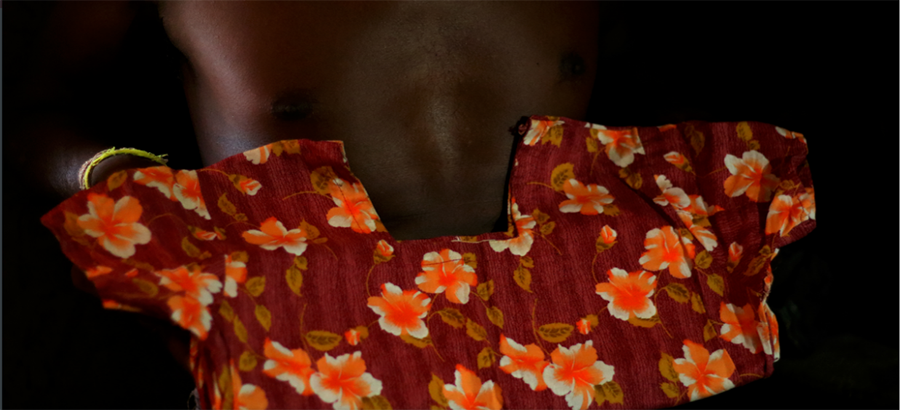
“I have one son. The LTTE continually asked us to give him to them. The last time, instead of taking my son, they took my daughter. She was in grade 9. During the final stages of the war, I saw her but once the fighting intensified, I lost track of her. I searched for her in many camps after the war, including the Ambepussa camp. I went to Colombo as well, but did not find her there. I don’t know what happened to her.”
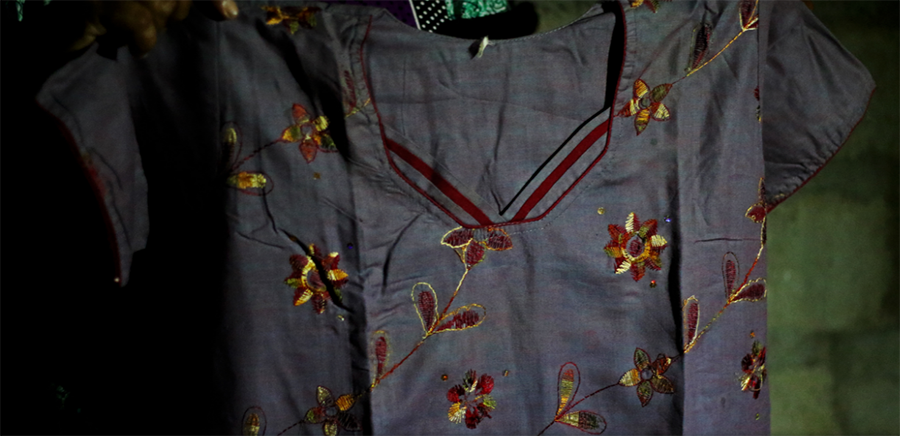
“I have four daughters. It was the eldest who disappeared. She used to support the family with her income. She went missing during one of the more intense battles near the end of the war, when shellfire was heavy. Many people said that they saw her near Vattuvaagal. Since it was a border area between the LTTE and the Army, I still believe she is alive and in a detention camp somewhere. My husband is now paralysed, suffering with depression because of the loss of our daughter.”
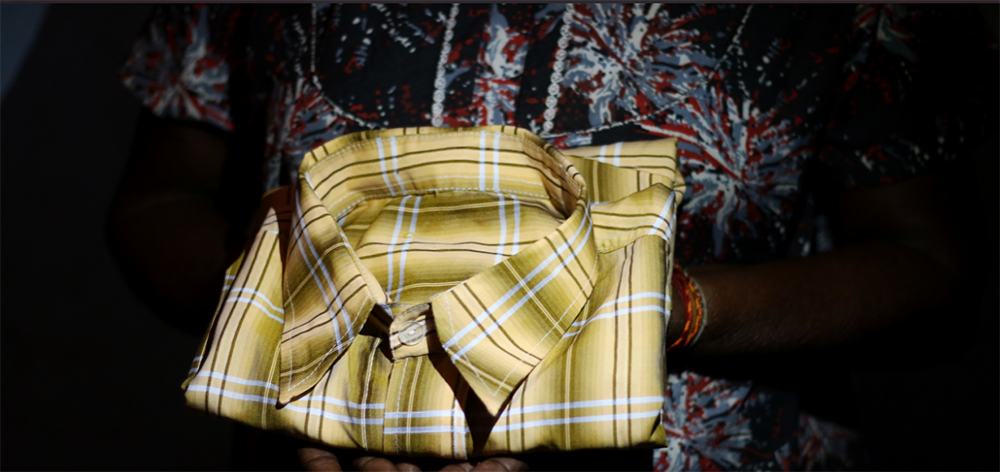
“My son worked as a tailor for 15 years. This is a shirt he made himself. He used to make clothes for me and even my daughter’s children. May 17, 2009, we crossed to the Army controlled area, and handed our son over to the Army. We did so believing that they would release my son. After that, we never saw him.”
The families of those who have been forcibly disappeared await answers.

Climate change threatens tea, but its DNA could save it
The world's most popular drink (after water) is under threat.
We already know much about the threat of climate change to staple crops such as wheat, maize and rice, but the impact on tea is just coming into focus.
Early research indicates that tea grown in some parts of Asia could see yields decline by up to 55% thanks to drought or excessive heat, and the quality of the tea is also falling.
The intensive use of pesticides and chemical fertilizers in tea plantations has also led to soil degradation at an average annual rate of 2.8%. This also causes chemical runoff into waterways, which can lead to serious problems for human health and the environment.
DNA to the rescue
However, hope may be on the horizon now that scientists at the Kunming Institute of Botany at the Chinese Academy of Sciences have sequenced the entire tea genome.
Mapping the exact sequence of DNA in this way provides the foundation for extracting all the genetic information needed to help breed and speed up development of new varieties of the tea plant. And it could even help improve the drink's flavour and nutritional value.
In particular, the whole tea tree genome reveals the genetic basis for tea's tolerance to environmental stresses, pest and disease resistance, flavour, productivity and quality.
Breeders could more precisely produce better tea varieties that produce higher crop yields and use water and nutrients more efficiently. And they could do this while widening the genetic diversity of tea plants, improving the overall health of the tea plant population.
This is also an important milestone for scientists because it provides a deeper understanding of the complex evolution and the functions of key genes associated with stress tolerance, tea flavour and adaptation.
Larger than coffee
The new tea genome is very large, with nearly 37,000 genes -- more than four times the size of the coffee plant genome.
The process of evolution by natural selection has already helped the tea plant develop hundreds of genes related to resisting environmental stress from drought and disease.
These genes are like molecular markers that scientists can identify when selecting plants for use in breeding. This will allow them to be more certain that the next generation of plants they produce will have the genes and so the traits they want, speeding up the breeding process.
Sequencing the genome also raises the possibility of using genetic modification (GM) technologies to turn on or enhance desirable genes (or turn off undesirable ones).
The same principles could also be used to enhance the nutritional or medicinal value of certain tea varieties. The genome sequence includes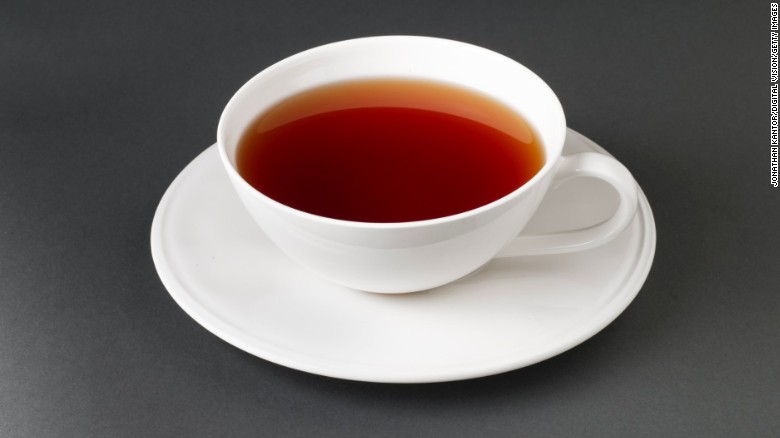 genes associated with biosynthesis. This is the production of the proteins and enzymes involved in creating the compounds that make tea so drinkable, such as flavonoids, terpenes and caffeine. These are closely related to the aroma, flavour and quality of tea and so using genetic breeding techniques could help improve the taste of tea and make it more flavorful or nutritional.
genes associated with biosynthesis. This is the production of the proteins and enzymes involved in creating the compounds that make tea so drinkable, such as flavonoids, terpenes and caffeine. These are closely related to the aroma, flavour and quality of tea and so using genetic breeding techniques could help improve the taste of tea and make it more flavorful or nutritional.
For example, we could also remove the caffeine biosynthetic genes from the tea plant to help to breed of low or non-caffeine varieties.
By boosting certain compounds at the same time, we could make tea healthier and develop entirely new flavours to make caffeine tea more appealing.
An estimated 5.56 million tons of tea is commercially grown on more than 3.8 million hectares of land (as of 2014).
And its huge cultural importance, as well as its economic value, mean securing a sustainable future for tea is vitally important for millions of people.
The first successful sequencing of the tea genome is a crucial step to making tea plants more robust, productive and drinkable in the face of massive environmental challenges.
Source ; CNN

What Buddhism teaches about peace and war
Adherents of a peaceful religion have been finding cause to fight
BUDDHISM is generally regarded, with good reason, as the most peaceful of world religions. Like other South Asian faiths, it stresses the principle of ahimsa, the “non-injury” of other living things. Yet its teachings also emphasise that violence harms the spiritual state of the perpetrator, as well as the victim.
Malicious thoughts or deeds are regarded as obstacles on the path to nirvana, the self-transcendence which is the end-point of all spiritual endeavour. Early Buddhist history contains strong pacifist messages. The faith’s founder, Gautama Buddha, is said to have stopped a looming war over water supplies with a rival clan, the Koliyas. After converting to Buddhism, Emperor Ashoka, who ruled over south Asia in the third century BC, is believed to have felt remorse for the bloodshed he had caused in his earlier life.
More recent history is rather different. In Asia, Buddhist monks have been in the front line of bloody inter-communal conflicts, as 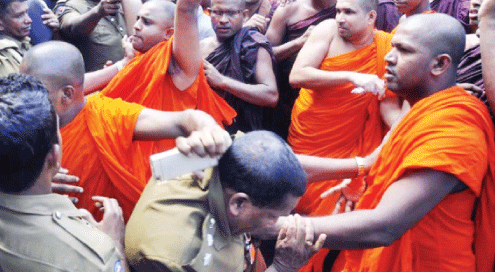 propagandists or even as participants. In Sri Lanka zealous groups such as Bodu Bala Sena (Buddhist Power Force) have propagated the view that a small Muslim community is a deadly danger to the country’s integrity as a Buddhist nation. Hard-line monks took a militantly anti-Tamil stance during the country’s civil war which ended in 2009. Last month a Buddhist monastic in Sri Lanka was arrested and charged with attacking a centre for Muslim refugees. In recent years, militant monks have also stormed mosques, slaughter-houses and places of learning.
propagandists or even as participants. In Sri Lanka zealous groups such as Bodu Bala Sena (Buddhist Power Force) have propagated the view that a small Muslim community is a deadly danger to the country’s integrity as a Buddhist nation. Hard-line monks took a militantly anti-Tamil stance during the country’s civil war which ended in 2009. Last month a Buddhist monastic in Sri Lanka was arrested and charged with attacking a centre for Muslim refugees. In recent years, militant monks have also stormed mosques, slaughter-houses and places of learning.
In Thailand, Buddhist monks have been victims and protagonists in a conflict that has raged in three southern provinces where the population is mainly Muslim. It is not unknown for monastics there to brandish weapons under their robes. The killing of two monks in 2004 triggered an escalation of fighting.
But it is in Myanmar where Buddhist violence has become most familiar of late. A monk called Ashin Wirathu has led demands for a harsh response to a perceived Muslim threat. His organisation, Ma Ba Tha, has supposedly been banned, but it still presses the authorities to take the hardest of lines against the Rohingya Muslims, of whom over 600,000 have been expelled to Bangladesh. Ma Ba Tha disseminates the idea that Myanmar’s overwhelming Buddhist majority is threatened by the Muslim minority. The stance is criticised by some Asian Buddhists. The Dalai Lama, Tibet’s exiled spiritual leader, has rebuked his coreligionists for persecuting the Rohingya, saying they should “remember Buddha”. He insisted that the faith’s founder would “definitely help those poor Muslims”.
Like every other important religion in history, Buddhism engenders powerful protective feelings among its followers, especially when sacred history and national history become intertwined, as happens in Sri Lanka. In the collective memory of Sri Lankan Buddhists, the emergence of their nation is seen as linked with the advent of their faith in the era of King Ashoka, if not earlier. And whenever people feel a threat to their identity and origins, they can easily be induced to lash out with disproportionate force, just as medieval Christians marched to war when told that their faith's holiest places in Jerusalem were being desecrated.
Moreover, as with any vast corpus of sacred texts and annals, things can be found in the Buddhist tradition to justify violence, at least in self-defence. Medieval Japan, for example, had its Buddhist warrior monks. And even the Dalai Lama agrees that one can take limited action in self-defence. If a man is aiming a gun at you, he once said, you can shoot back, but to wound rather than kill.
Source: The article was first published in the Economist on November, 17.
Photo Credit: Reuters

Universal Basic Income Could Work In Southeast Asia — But Only If It Goes To Women
By Tamara Nair
The universal basic income debate has been raging for some years, with politicians and people hotly divided over the notion of their government paying every citizen a set amount of money on a regular basis, without requiring work to be completed.
The idea of everybody, including society’s most marginalised, being able to afford their basic needs is popular with mostly libertarian and progressive politicians, and there is some empirical evidence that it can quickly increase a country’s productivity and reduce domestic inequality.
Conservative economists, however, reject the idea, citing its “impossibly expensive” nature.
Economic feasibility is a critical question for any government program, of course, and it is particularly relevant in the developing world, where universal basic income (UBI) has been suggested as a development tool.
One reason that Southeast Asian countries, for example, have struggled to improve gender equality (despite avowals of committment to the idea) is increased economic insecurity, which has widened the gap between men and women and separated women from opportunities.
Might UBI be one way to both empower women and reduce hunger in the region?
Money in the hands of women
My research focuses specifically on women from the region who live below the poverty line, which, for East Asia and the Pacific, the World Bank defines as living on less than US$3.20 a day.
In Cambodia, Laos, the Philippines, Indonesia and Vietnam – among the poorest Southeast Asian nations – between 13% and 47% of the population is living in poverty. The number is significantly lower in better-off Brunei and Singapore.
On the whole, women in these countries fare well enough compared to their peers in other developing regions in terms of literacy, employment, political participation and the right to organise. But this has not translated into greater gender equality.
Here, heteronormativity reigns, dictating that men and women (and only men and women; all other gender identities are discounted) have distinct and complementary roles in life, from economics and education to politics.
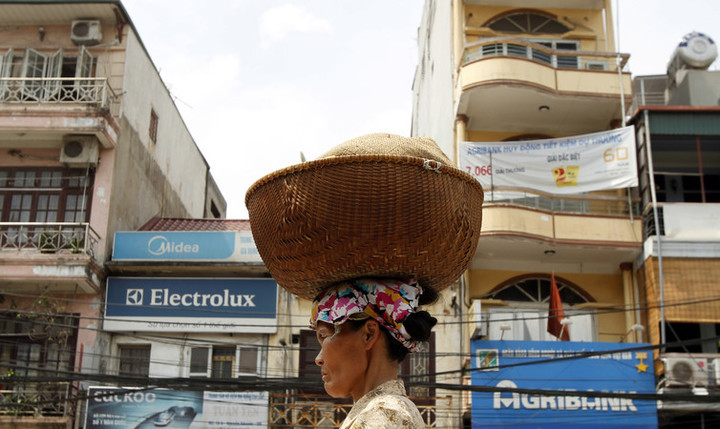
A woman carries a basket of bread for sale on her head on a street in Hanoi.
Women are primarily seen as wives and mothers, a gender stereotype reinforced in both everyday experiences and in the theological texts of the main religions in the region.
That perspective also seems to dominate within the Association of the Southeast Asian Nations (ASEAN). Though women feature strongly in ASEAN’s socio-cultural community line of work, there is very little debate about the role of women in the economic or political sphere.
By giving women the financial freedom to act as “agents” of development in the region, universal basic income could be a tool that ultimately paves the way for their future economic and political involvement.
Women as agents of development
This process would start with something simple (and seemingly uncontroversial): women being able to put food on the table.
In poor families in Southeast Asia, up to 80% of household income is spent on food, yet under-nutrition remains a huge problem in Cambodia, Laos, the Philippines, Indonesia and, to a lesser extent, in Vietnam.
If women were provided with sufficient income to feed their families, it would translate into better nutrition, health and general well-being for children and others entrusted in their care, and by extension, their communities.
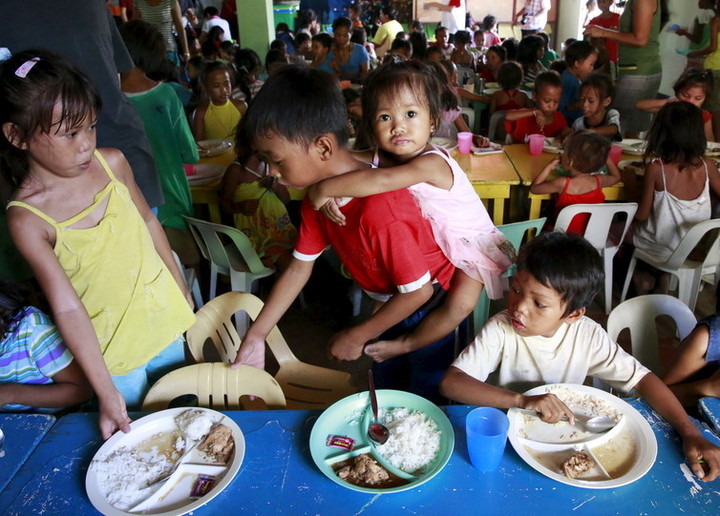 Children eat free meals distributed by group World Mission Community Care in a slum in Manila.
Children eat free meals distributed by group World Mission Community Care in a slum in Manila.
Creating economic security for women is also key to a country’s development. Southeast Asian women in poorer income brackets generally have access to very few jobs, outside of traditional occupations such as farming and housekeeping. And, today, even these jobs are threatened by climate change and a growing movement to ban the export of foreign domestic workers.
Digitisation may lead to further unemployment among men, particularly in Southeast Asian manufacturing economies, exacerbating hunger and malnutrition.
There is evidence that giving women a specifically calibrated amount of money – regularly, and with no strings attached – could make a big difference in such settings.
After the NGO GiveDirectly first started its UBI program in a Kenyan village in 2016, it offered some residents US$22 a month The entire community quickly saw positive effects, according to a February 2017 assessment of the program in the New York Times. And residents hope that the experiment, which is scheduled to last for 12 years, will gradually lift them out of poverty.
UBI in Southeast Asia
Tacked onto the state’s existing social safety nets, UBI can give much needed specific attention to women’s broader economic empowerment, which is vital to a developing country’s growth.
The first step toward doing so in Southeast Asia would be to identify women living below the poverty line. Next, as in Kenya, each of these woman would be given a sum of money in the form of electronic cash transfers.
Accessible through cheap mobile phones, this money can be used to purchase food and other basic necessities in participating shops, which may be incentivised to participate with credits or subsidies of their own.
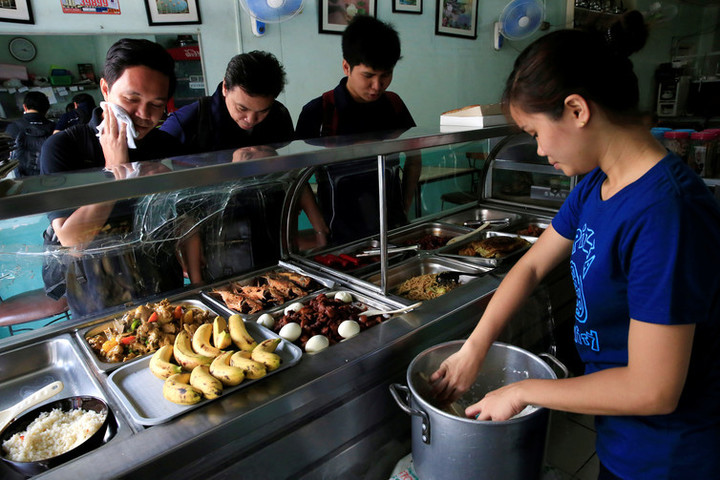 Small businesses, like this restaurant in the Philippines, should be encouraged to take part in the UBI scheme.
Small businesses, like this restaurant in the Philippines, should be encouraged to take part in the UBI scheme.
To prevent abuse of a program intended to empower women and support families, the cash transfers must be either non-transferrable or transferrable only to another female family member, and only women will be able to spend the money (in approved shops).
Evidence from other countries suggests that, in some cases, men waste this “free pay” on alcohol, gambling and other non-essentials.
Programs must also be designed to be cognisant that, when women in traditional societies are empowered, violence against them may increase, as men see women with money as a threat to their role in family and society.
Finally, women must be able to “graduate” from a UBI scheme. The idea is to empower participants, giving women a leg up to become active members of society – not to incapacitate them.
In the Kenyan case, for example, many women (and men, too) used the allocated income to start small businesses. This opportunity could be developed as part of a potential UBI in Southeast Asia, considering both public- and private-sector partnerships.
The ConversationIf a universal basic income program really works, then women may even become contributors to programs in the future, and not just their beneficiaries.
Tamara Nair, Research Fellow in Non-Traditional Security Studies at RSIS, Nanyang Technological University.
PICS: Reuters
Page 10 of 10